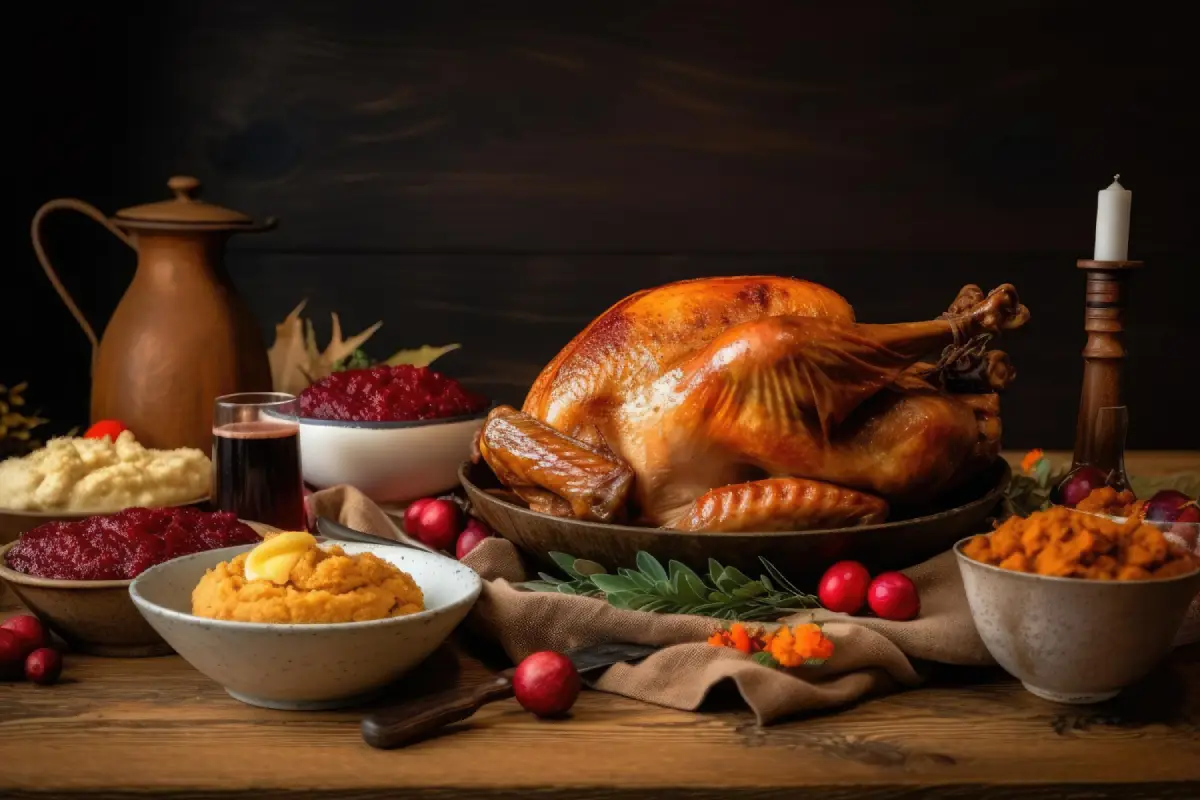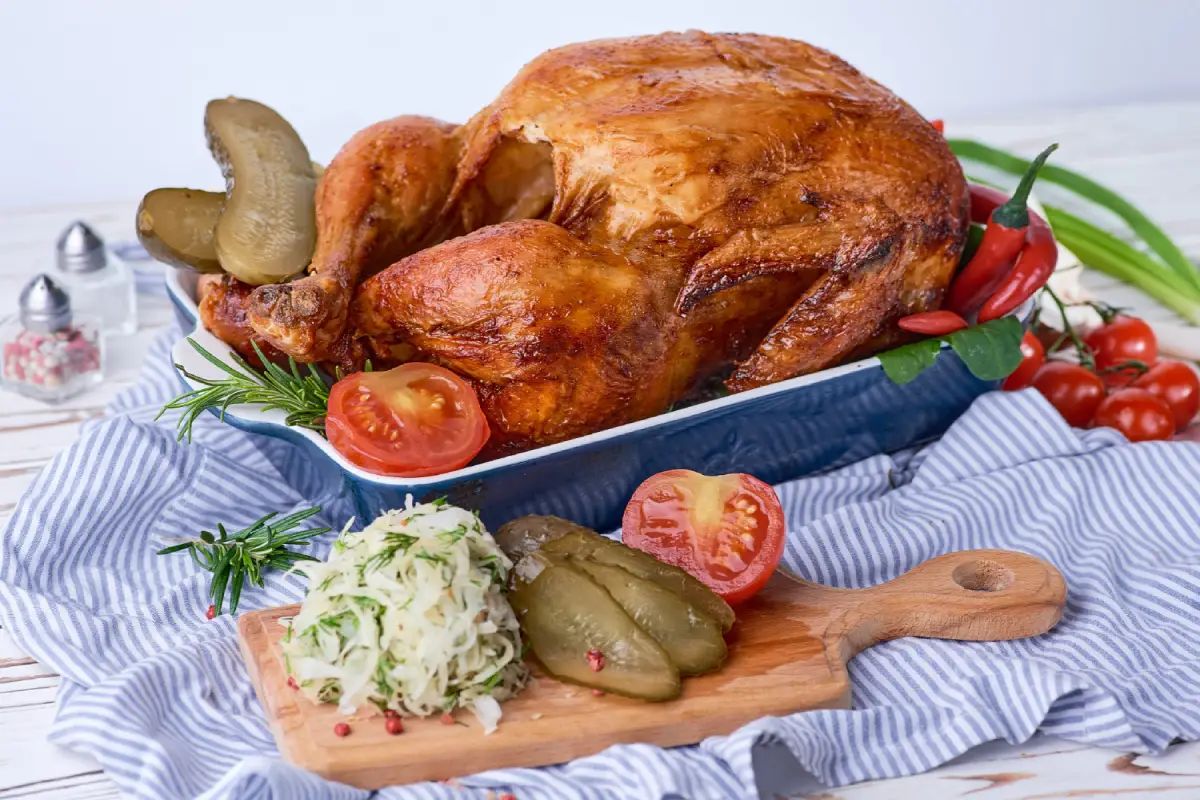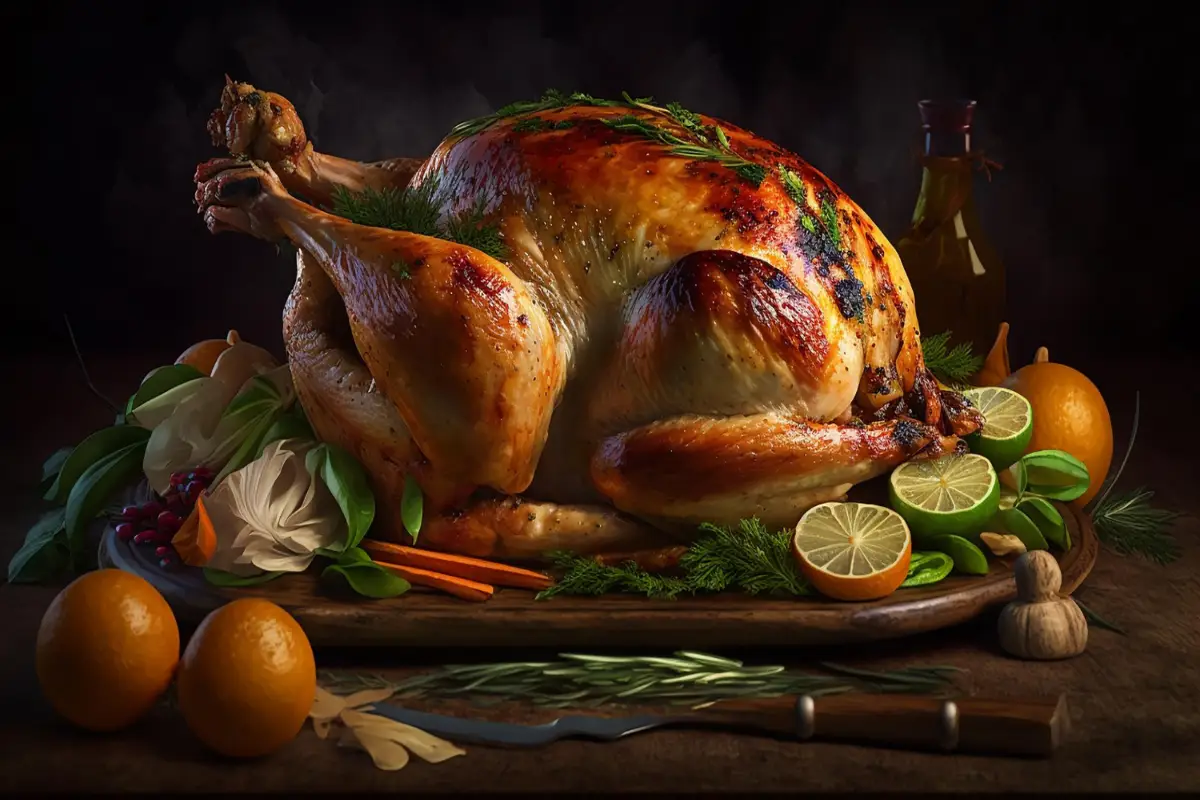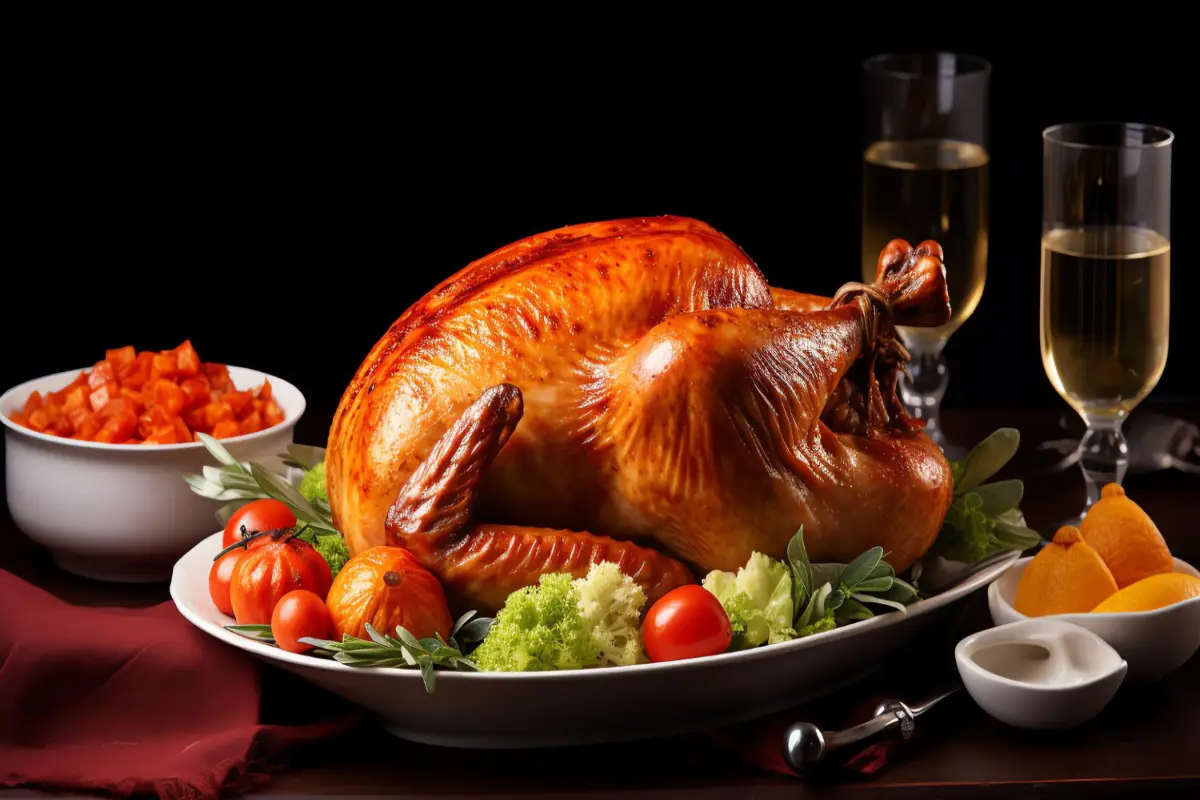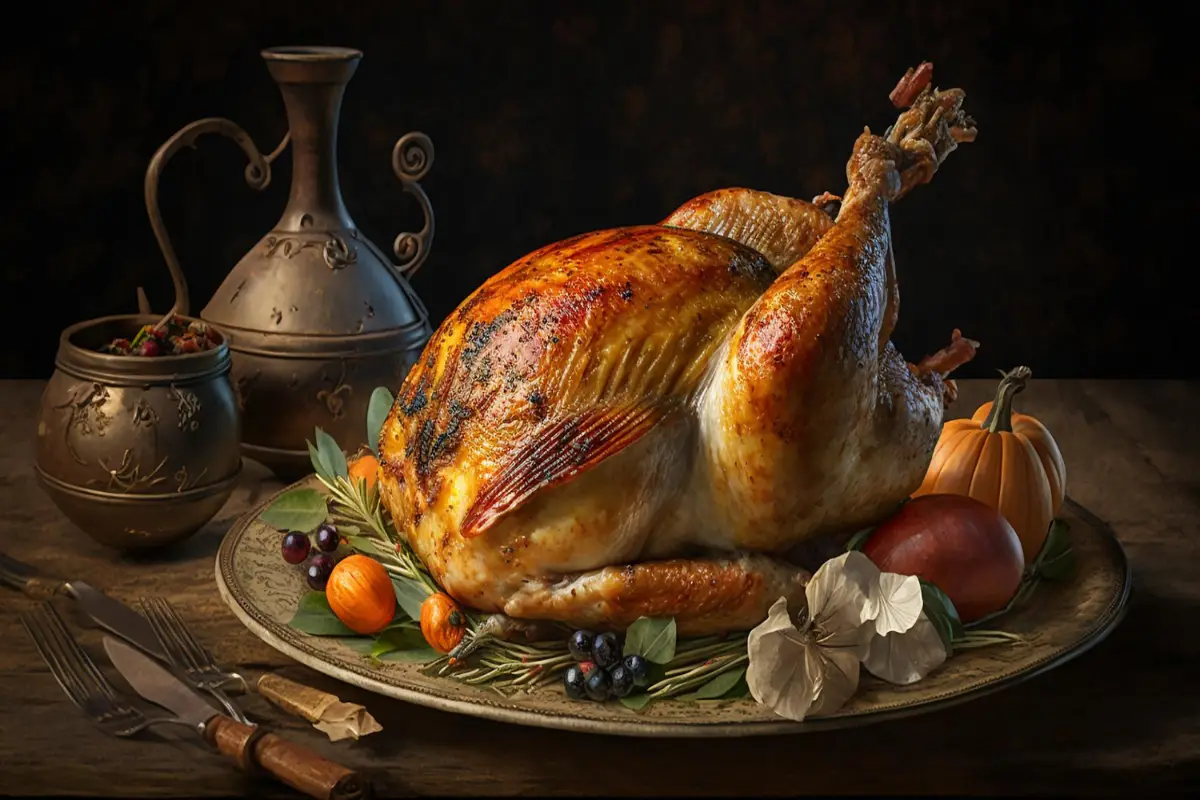Dive into the essentials of turkey basting here, where juicy, flavorful roasts are everyone’s goal. Are you gearing up for the holidays or just looking to nail that perfect roast? Get to know the turkey baster. This tool may seem basic, but its role in cooking is vital. It keeps your poultry moist and flavorful, basting it to perfection. This guide will show you all there is to basting, offer clever uses for your baster, and answer common questions. Ready to become a basting expert? Let’s begin this tasty journey.
Why Basting Makes a Difference in Cooking
Enhancing Moisture and Flavor
Basting is a game-changer in the kitchen, especially when aiming for moist and flavorful meats. As you baste, the meat soaks up the juices, ensuring each bite is rich and delicious. Moreover, these juices carry the essence of your seasonings, herbs, and spices, marrying them into the meat’s fabric for a taste that’s deep and authentic.
Perfecting the Texture
Furthermore, the art of basting goes beyond mere taste. It’s pivotal for achieving that perfect, crispy skin that everyone loves. The oven’s heat works with the basting liquids to crisp the skin, offering a delightful texture that enhances the overall eating experience.
Ensuring Even Cooking
Additionally, basting contributes to an even cook. Regularly spooning or squirting those savory juices over the meat prevents the surface from drying out prematurely, promoting an even cook that’s just right from the crispy exterior to the tender interior.
A Canvas for Creativity
Lastly, basting isn’t just about using the meat’s natural juices. It invites you to get creative — to baste with broths, wines, or herb-infused butters. This not only maintains moisture but also adds complex layers of flavor, elevating a simple roast to the level of a culinary masterpiece.
In conclusion, basting is essential for anyone who wants to deliver a roast that’s not just good, but great. It’s a simple technique that encompasses the art of cooking, touching on every element that makes a dish stand out: moisture, flavor, texture, and presentation.
Selecting the Right Turkey Baster for Your Kitchen
Understanding Different Baster Materials
When it comes to choosing a turkey baster, material matters. Glass basters are excellent for their durability and heat resistance, allowing you to baste at high temperatures without worry. Plastic basters, on the other hand, are lightweight and often less expensive, making them a popular choice for occasional use. Stainless steel basters are the workhorses of the kitchen, withstanding repeated use and high heat without a hitch.
Baster Design and Usability
Moreover, the design of the baster can impact its performance. A good turkey baster will have a bulb that’s easy to squeeze and a tube that allows for a smooth draw of juices. Some models feature a no-drip tip, which is incredibly helpful in keeping your oven—and your hands—clean.
Additional Features to Consider
Furthermore, additional features might include measurement markings, which are handy for recipes that call for precise amounts of basting liquid, or silicone bulbs that can withstand heat and provide a comfortable grip. Some basters even come with their own cleaning brushes, simplifying the post-cooking cleanup.
Making the Right Choice
Ultimately, the right turkey baster for your kitchen is one that suits your cooking style and needs. Whether you roast meats regularly or just on special occasions, there’s a baster that’s perfect for you. With the right tool in hand, basting becomes not just a step in your cooking process but a guarantee of delicious, mouth-watering results.
In summary, choosing a turkey baster isn’t a decision to take lightly. The right one will not only fit your hand comfortably but also make the act of basting seamless, contributing to the overall success of your culinary creations.
Step-by-Step: How to Baste a Turkey
Preparing for Basting
Before you even preheat the oven, make sure your turkey is ready to be the star of the show. Pat it dry, season it inside and out, and place it on the roasting rack. Now, fill your baster with the juices from the bottom of the pan or with your chosen basting liquid.
The Basting Process
As your turkey roasts, you’ll want to baste it every 30 minutes. Carefully open the oven and use your baster to draw up the hot liquids pooled in the pan. Drench the turkey’s skin with these juices, covering as much surface area as you can. This consistent basting will reward you with a turkey that’s moist inside and out, sporting a skin that’s beautifully browned and crisp.
Safety First
Always be cautious when basting. The oven is hot, and so are the juices. Protect your hands with oven mitts, and keep your face away from the oven’s heat when basting. It’s essential to do this quickly to prevent heat loss from the oven and ensure an even cooking temperature.
The Final Touch
In the last hour of cooking, you may choose to stop basting to allow the skin to become as crisp as possible. Once your turkey reaches the desired internal temperature, remove it from the oven and let it rest. This allows the juices to redistribute, ensuring every slice is as moist as the next.
Innovative Uses for Your Turkey Baster
Beyond the Traditional Roast
A turkey baster isn’t just for Thanksgiving. Its versatility extends far beyond basting a roast. Think of it as a precision tool for adding or removing liquids in a variety of cooking scenarios.
Portioning Pancake Batter
One creative use is portioning pancake or waffle batter. The baster allows you to dispense the perfect amount of batter onto the griddle, ensuring uniformly sized pancakes every time. This method is not only neat but also fun, especially when cooking with kids.
Removing Excess Fat
Another ingenious application is in skimming excess fat from soups, stews, or gravies. The baster can precisely suck up the oily layer that floats on top, leaving you with a healthier and more flavorful dish.
Watering Plants Precisely
Think outside the kitchen, too. A turkey baster can be a handy tool for watering small houseplants. Its narrow tip allows you to water the roots directly without making a mess.
Filling Small Containers
Additionally, a turkey baster is ideal for filling small containers with liquids, such as transferring cooking oils or homemade dressings into bottles. The control and precision it offers make spills a thing of the past.
These are just a few examples of how a turkey baster can be a multipurpose tool in your kitchen and beyond. Its ability to add and remove liquids with precision makes it a gadget that’s limited only by your creativity. With a turkey baster in hand, you’re not just a cook; you’re an innovator in the kitchen. For more creative ideas, check out 7 Undeniably Brilliant Ways You Need To Use Your Turkey Baster.
Cleaning and Maintaining Your Turkey Baster
Routine Cleaning
After each use, it’s vital to thoroughly clean your turkey baster. Disassemble it, separating the bulb from the tube. Wash both parts with warm, soapy water. For tougher residues, you can use a mixture of baking soda and water to gently scrub the inside.
Dealing with Stubborn Residues
Sometimes, you might encounter stubborn grease or residue. In such cases, fill the tube with a mixture of hot water and vinegar or lemon juice. Let it sit for a few minutes before rinsing. This will help break down the grease and eliminate odors.
Drying and Storage
Proper drying is as important as cleaning. Ensure that both the bulb and tube are completely dry before reassembling and storing your baster. Storing the baster while it’s still damp can lead to mold and unpleasant smells.
Periodic Deep Cleaning
Occasionally, it’s a good idea to give your baster a deeper clean. Boil the parts in water for a few minutes to sanitize them thoroughly. Be sure to handle them with care when they’re hot.
Maintaining the Bulb
The bulb, especially if it’s made of rubber or silicone, may degrade over time. Keep it away from direct sunlight and heat sources when not in use. If the bulb becomes cracked or loses its elasticity, it’s time to replace it.
Keeping your turkey baster clean and well-maintained ensures its longevity and performance. A clean baster is not only more effective but also safer to use, free from bacteria and mold. By taking good care of this simple yet essential tool, you’re ensuring that every use contributes to a delicious and healthy meal.
For more on maintaining kitchen tools like the turkey baster, visit Epicurious’ comprehensive guide.
The Best Turkey Basters on the Market: A Comparative Review
Top Picks for Every Kitchen
The market is brimming with various turkey basters, each boasting unique features. To help you make an informed decision, we’ve compared some of the top models, focusing on their material, durability, and special features.
Glass Turkey Basters
Glass turkey basters, like the [Brand X] model, offer excellent heat resistance and durability. They’re often favored for their classic look and ease of cleaning. However, they can be heavier and more fragile than other types.
Plastic Turkey Basters
Plastic basters, such as the [Brand Y] option, are lightweight and affordable. They’re a great choice for occasional use. The downside is they might not withstand high temperatures as well as glass or stainless steel.
Stainless Steel Turkey Basters
Stainless steel basters, like the [Brand Z] design, are robust and can last a lifetime. They’re ideal for frequent roasters and can withstand high temperatures without any issue. They might be more expensive, but their durability makes them a worthwhile investment.
Innovative Features
Some basters come with innovative features. For instance, the [Brand A] baster includes a silicone brush attachment for even more versatility in the kitchen. Meanwhile, [Brand B]’s model boasts an ergonomic design that makes it easier to handle and squeeze, even for those with limited hand strength.
Making the Right Choice
Your choice will depend on your specific needs and preferences. Consider how often you plan to use the baster, what kind of dishes you’ll be making, and your budget. A well-chosen turkey baster can be a lifelong kitchen companion, elevating your cooking for years to come.
In summary, whether you opt for glass, plastic, or stainless steel, each type of turkey baster has its merits. The key is to find one that aligns with your cooking habits and kitchen style. With the right tool, the simple act of basting can transform your dishes, making every roast a memorable feast.
Basting Tips for Holiday Cooking
Planning Your Basting Schedule
Holiday cooking, especially for large gatherings, requires a well-thought-out plan. When it comes to basting, timing is everything. Plan to baste your turkey every 30 to 45 minutes. However, remember that every time you open the oven door, you lose heat, so keep the basting process quick and efficient. Learn additional Thanksgiving turkey roasting tips from The Spruce Eats.
Incorporating Flavors
Holidays are the perfect time to get creative with your basting liquids. Beyond the traditional turkey juices, consider using melted butter mixed with herbs, white wine, or even a splash of apple cider for a festive twist. These flavors will not only enhance the moisture of your turkey but also infuse it with holiday-specific aromas and tastes.
Managing Oven Space
During holiday cooking, oven space is at a premium. If you’re basting a turkey, plan your side dishes accordingly. Opt for items that can be prepared on the stovetop, in a slow cooker, or baked at the same temperature as the turkey.
Safety and Hygiene
Always practice safety and hygiene when basting. Use separate utensils for raw and cooked food to avoid cross-contamination. Also, ensure your turkey reaches the safe internal temperature of 165°F (74°C) to guarantee it’s cooked thoroughly.
Resting the Turkey
After your turkey is done, don’t forget to let it rest before carving. This allows the juices to redistribute throughout the meat, ensuring every slice is moist and flavorful. Cover the turkey loosely with foil and let it sit for about 20 minutes before carving.
Holiday basting is more than just a cooking technique; it’s a ritual that brings flavor and joy to the table. With these tips, your holiday feasts are sure to be remembered for their delicious, perfectly basted turkey. Embrace the holiday spirit in your kitchen, and let the basting begin!
Frequently Asked Questions about Turkey Baster
What is a turkey baster used for?
A turkey baster is primarily used for basting, which involves spooning or squirting the cooking juices over meat (like turkey) to keep it moist and flavorful during roasting. It’s a simple tool that can make a big difference in the quality of your roasts.
What is another name for a turkey baster?
A turkey baster is sometimes referred to as a “basting syringe” or “basting bulb.” Regardless of the name, its purpose remains the same – to moisten and flavor meats during the cooking process.
What can you use instead of a turkey baster?
If you don’t have a turkey baster, you can use a large spoon or a ladle to scoop up the cooking juices and pour them over the meat. Alternatively, a clean, unused paintbrush or a silicone pastry brush can also be used for basting.
What is the function of a baster?
The primary function of a baster is to baste meats during roasting. Basting helps to keep the meat moist, adds flavor, and can contribute to a crispy, golden skin on poultry.
How often to baste turkey?
It’s generally recommended to baste a turkey every 30 to 45 minutes. However, remember that every time you open the oven, it loses heat, so it’s essential to baste quickly and close the oven door promptly.
How to baste a turkey?
To baste a turkey, use the baster to draw up the juices from the bottom of the roasting pan. Then, squirt these juices over the entire surface of the turkey. Be sure to cover as much of the skin as possible for even flavor and moisture.
Conclusion: Mastering the Art of Basting
In this ultimate guide, we’ve journeyed through the world of turkey basting, uncovering the secrets that make it an essential technique in the culinary arts. From understanding why basting makes a difference in cooking to selecting the right turkey baster for your needs, we’ve covered a range of topics to enhance your cooking experience. We’ve explored innovative uses for the turkey baster, ensuring that this tool becomes a versatile ally in your kitchen adventures.
Moreover, we delved into the practical aspects of basting, providing step-by-step instructions and tips for holiday cooking, ensuring that your festive feasts are both memorable and delicious. The importance of cleaning and maintaining your turkey baster was also highlighted, ensuring longevity and effectiveness in your culinary toolkit.
Through our comparative review, we helped you navigate the choices available in the market, making it easier for you to find the perfect turkey baster. And finally, by answering some of the most frequently asked questions, we aimed to demystify the process of basting, making it accessible and straightforward.
As we conclude this guide, remember that basting is more than just a cooking technique; it’s a way to bring flavor, moisture, and joy to your dishes. Whether you’re a novice cook or a seasoned chef, mastering the art of basting with a turkey baster will elevate your roasts to new heights of deliciousness. So, embrace the baster, experiment with flavors, and most importantly, enjoy the journey of creating sumptuous meals that delight and satisfy.
Thank you for joining us on this flavorful exploration. May your roasts be ever moist, your flavors rich, and your meals unforgettable. Happy basting!

